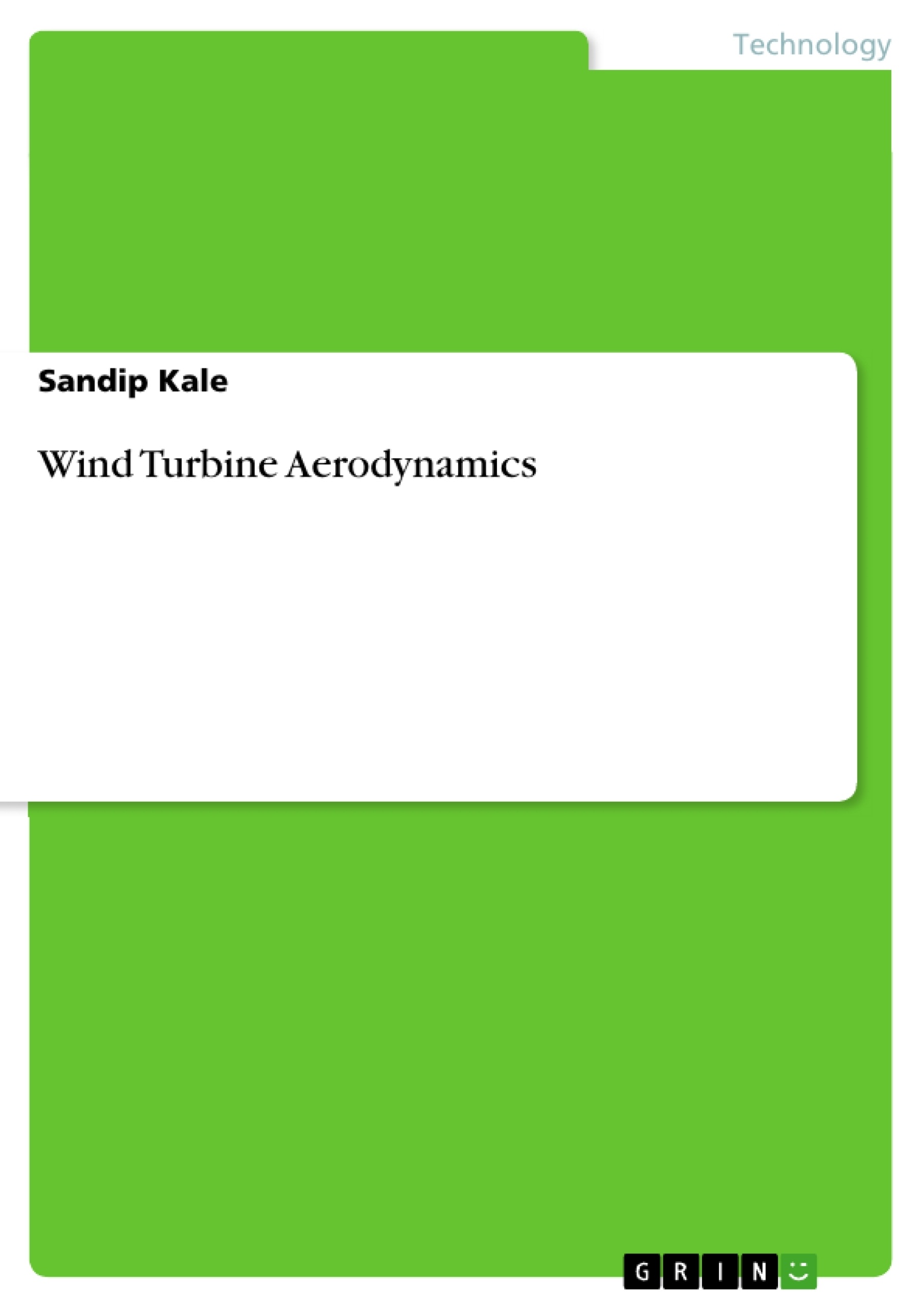A wind turbine is a device that extracts kinetic energy of the wind and converts it into useful energy. The power produced by a wind turbine depends on the interaction between the wind turbine rotor and the wind. Thus, wind turbine aerodynamics is an important field of study for designing a blade and analyzing the aerodynamic performance of the rotor. A number of scientists have derived various methods for aerodynamic analysis of wind turbine rotors. These methods are presented here.
Inhaltsverzeichnis (Table of Contents)
- One dimensional momentum theory
- Power coefficient
Zielsetzung und Themenschwerpunkte (Objectives and Key Themes)
This document explores the fundamental principles of wind turbine aerodynamics, aiming to provide a comprehensive understanding of how wind turbines extract energy from the wind. The analysis focuses on momentum theory, a fundamental approach to understanding the interaction between the wind turbine rotor and the wind flow.
- Momentum theory as a foundation for analyzing wind turbine aerodynamics
- The relationship between wind speed, rotor design, and power extraction
- The concept of axial induction factor and its influence on wind velocity
- The definition and significance of power coefficient (Cp)
- The Betz limit and its implications for maximum power extraction
Zusammenfassung der Kapitel (Chapter Summaries)
The first section delves into the one-dimensional momentum theory, a fundamental approach for analyzing wind turbine aerodynamics. The theory relies on a set of assumptions, including homogeneous and incompressible flow, as well as the absence of frictional drag. This section introduces the concept of an actuator disc, a simplified representation of the wind turbine rotor, and explores the relationship between wind velocity, pressure, and the axial induction factor, a key parameter in understanding the interaction between the rotor and the wind.
The second section focuses on the power coefficient (Cp), a crucial metric for evaluating wind turbine performance. The section derives the equation for Cp based on the momentum theory and discusses the maximum achievable Cp, known as the Betz limit. The significance of the Betz limit as a theoretical upper bound for wind turbine efficiency is highlighted.
Schlüsselwörter (Keywords)
Wind turbine aerodynamics, momentum theory, actuator disc, axial induction factor, power coefficient, Betz limit, wind speed, rotor design, power extraction.
- Arbeit zitieren
- Sandip Kale (Autor:in), 2011, Wind Turbine Aerodynamics, München, GRIN Verlag, https://www.grin.com/document/350486



